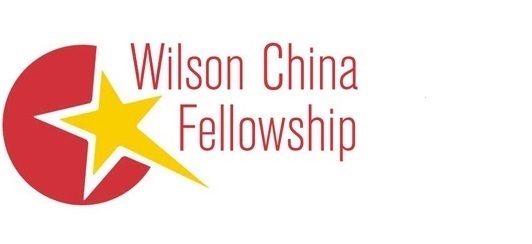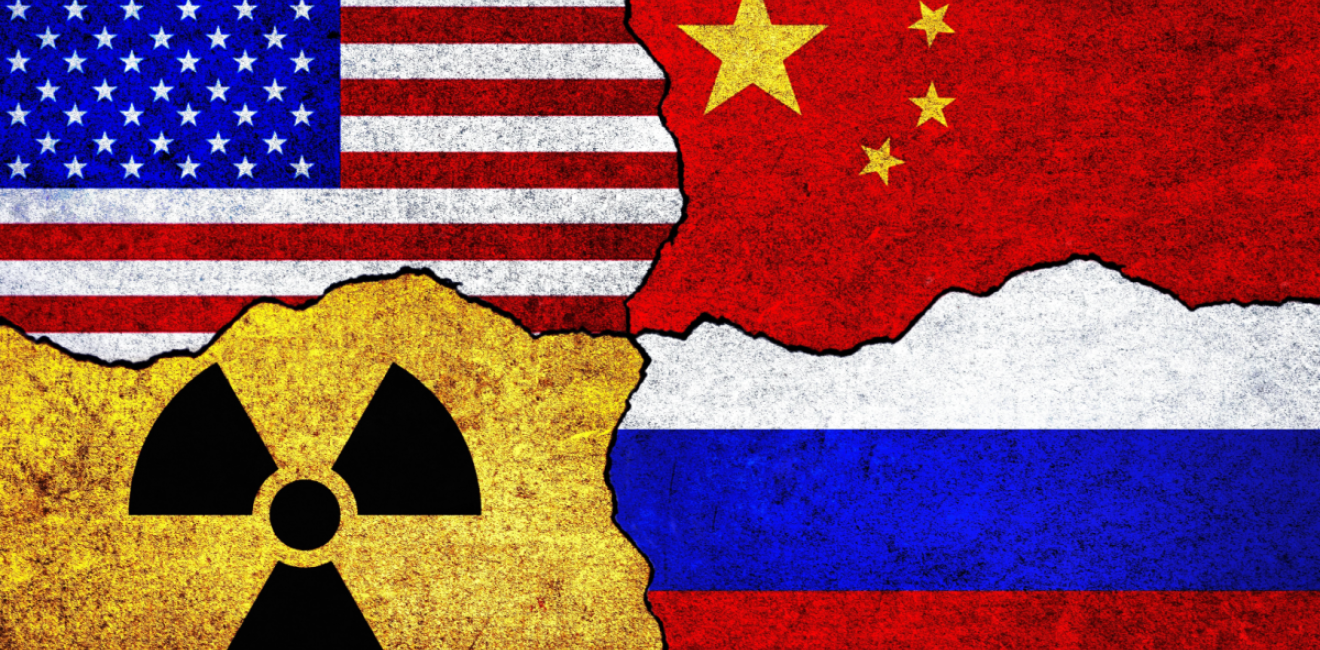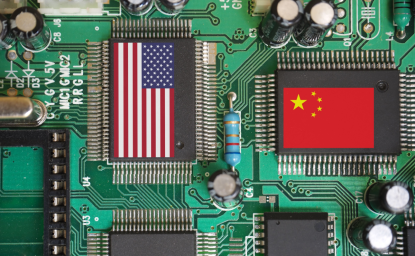As the US, Russia and China engage in a highly visible competition in developing advanced weapons systems, behind the scenes another contest is quietly taking place: the race to export civil nuclear reactors. Russia and China have both established programs to export nuclear reactors to countries with little to no nuclear infrastructure. These programs foster long-term dependencies on the exporters, and in turn present strategic security challenges for Western nations. The US must act to counter this influence in the nuclear market and maintain leadership in nuclear energy.
Nuclear energy interests many countries, but it comes with high costs.
The recent resurgence in nuclear energy has brought a lot of “nuclear newcomers” to the table. Many countries with little to no experience in nuclear energy are now turning to nuclear power for a more sustainable source of energy.
Countries such as Poland, Turkey, Singapore, the UAE and Saudi Arabia have all shown interest in expanding their nuclear programs. The IAEA stated in August of 2024 that roughly 30 newcomer countries are “either considering nuclear power or moving forward with plans” for nuclear construction.
However, demonstrated interest in nuclear power is very different from starting construction. The greatest impediment to these newcomers is the heavy cost associated with building and operating nuclear power plants. Capital costs for nuclear power plants vary depending on factors such as location, reactor design, and financing mechanisms. However, for countries with little or outdated nuclear infrastructure, the costs can range from $8,000-11,000 per kilowatt or more of energy produced, meaning the cost for a nuclear power plant can reach tens of billions.
Despite the costs, there are many other reasons why these countries wish to turn to nuclear energy, such as increasing the diversity of their energy supply, lowering carbon emissions, and improving air quality. Reactors are particularly useful as a supply of continuous, reliable energy. They have a high capacity factor, which is the ratio of the actual amount of electricity produced by an energy source in comparison to its potential full electricity generating capacity if running continuously. In addition, they generally require less maintenance than other forms of energy like coal or gas.
China and Russia have launched commercial nuclear export programs which help reduce initial costs for nuclear newcomers.
Many countries with advanced nuclear programs form agreements with nuclear newcomers to construct nuclear power plants, including France, Canada, South Korea, and the United States. However, Russia and China have capitalized on this resurgence to develop mass export plans to newcomer countries.
Russia has the most successful nuclear diplomacy plan in history and has built numerous nuclear reactors in countries without pre-existing nuclear infrastructure, thus establishing long-term dependencies on Russian support. Russia’s nuclear state-owned enterprise (SOE), Rosatom, offers a Build-Own-Operate (BOO) model to customers, in which Russia finances most or all of the nuclear project, supplies workers and materials to build and to operate the nuclear reactors, and allows importing countries to repay their debts via a fixed payment plan.
China appears to be seeking to follow suit. Over the past decade, the People’s Republic of China (PRC) has become a rising competitor in the civil nuclear sector, leading the world in nuclear builds with 28 reactors currently under construction. The PRC has established a nuclear export plan to other countries as part of their Green Belt and Road Initiative, and has signed an alarmingly high number of Memorandums of Understanding and declarations of agreement with other countries on nuclear cooperation. Over the past five years, the PRC has formed deals with the UK and Argentina for the construction of Chinese Hualong One nuclear reactors, although both of these have fallen apart.
The PRC has also contributed a large amount of financial support to these countries. A database compiled by the US NGO Oil Change International lists “19 billion USD from Chinese institutions were given to nuclear power plant construction, operations, and maintenance” in 2023, making them the largest provider identified.
These models of nuclear exportation are attractive to newcomers, as they front the costs and present their clients with a repayment plan at a favorable interest rate.
The Danger in China and Russia’s Nuclear Expansion
The concern is not just that US suppliers are losing global market share. A greater concern is that China and Russia’s ambitions to export nuclear reactors create intense dependencies with profound geopolitical implications. Nuclear power dependencies are far more significant than other types of technology exportation to the Global South.
Length: The nuclear reactor that China has been intent on exporting in recent years is the Hualong One, which has a life of expectancy of 60 years. With added time for construction and decommissioning of this reactor, total life expectancy is almost 100 years. Additionally, the reactor core must be refueled every 18 months. The ACP100, a Chinese small modular reactor heavily advertised for future exportation, has a similar lifespan.
Specialized Knowledge: Reactor types are highly specialized. Engineers and regulators must undergo specialized training programs to work on these reactors. It is likely that the exporting country would provide workers for the construction, refueling, and decommissioning processes, cementing longstanding ties between the host and supplier nations.
Cost: These deals, particularly in the case of newbuilds, put the borrower in tremendous debt to the supplier. For example, China’s deal to construct Units 2 and 3 of the Karachi Nuclear Power Plant in Pakistan has amounted to over $5 billion in loans from China’s Exim Bank.
High Switching Cost: As nuclear reactor components are highly specialized and tailored to specific models, they’re hard to substitute from a different provider. If nuclear import countries decide they don’t want to continue with their agreements, the cost to switch to a different provider will be extremely high, if not prohibitive. For instance, the control and safety systems of a reactor are so intricate that reverse engineering them could take years.
Risk of Supply Disruption: All these factors mean that it would be very difficult for nuclear newcomer countries to operate nuclear reactors independently. If something were to go wrong, like if a coolant pump failed or there was a blockage of nuclear fuel, and the supplier country refused to help, it is likely the reactor would need to be shut down.
Leverage: Exporting countries can then use this dependency to exert leverage over their supplier country to extract concessions. One past example is the Bushehr nuclear power plant in Iran, constructed by a Russian nuclear SOE under a BOO agreement. In June of 2021, the plant underwent an unexplained emergency shutdown after Iran failed to pay Rosatom per their agreement.
Russian and Chinese nuclear expansion has been a longstanding issue. In 2019 various national security experts wrote to Congress on the security risks associated with Chinese and Russian expansion. However, no substantive changes have been made.
The US is Lagging Behind in the Global Nuclear Market – Strong on Innovation, Weak on Financing
The US surpasses any other country in nuclear energy. However, US-based reactors represent a smaller number of designs under construction.
The closest that the US may have come in recent years to a nuclear export plan was Project Phoenix, a plan under the Biden administration to offer technical assistance and support feasibility studies to countries seeking small modular reactors. Although it involved nuclear cooperation between the US and Global South, Project Phoenix was not an export plan and did not involve nuclear investment or construction.
One of the main impediments to a US export plan is a lack of government financing. Previous legislation, such as the Bipartisan Infrastructure Law of 2021, the Inflation Reduction Act of 2022, and the Nuclear Fuel Security Act have helped to generate funding for nuclear energy, but primarily support domestic nuclear advancement. A government-regulated nuclear export plan would require significant financial resources.
Another major impediment is the risk attached to long-term lending necessary for US reactor projects overseas. The long-term financing requirements of these projects assumes that for the next century, the importing country will have a stable government aligned with the US.
Recommendations for the US Government and Nuclear Industry
A US export plan may be difficult after repeated nuclear failures, such as the infamous cost overruns and delays of Westinghouse's construction of AP1000 reactors at the V.C. Summer Nuclear Station in South Carolina and the Vogtle Power Plant in Georgia.
This is especially challenging with little government funding or congressional support. Unlike China and Russia, the US government doesn’t have state-owned enterprises (SOEs) like CNNC or Rosatom.
One of the most plausible options for federal financing comes from the US Export-Import Bank (EXIM). EXIM is currently planning to support the financing of new reactors in Poland and Romania, and is up for reauthorization in 2026.
However, even before starting a nuclear export program, there are steps that public and private entities can take to advance the US nuclear industry:
- Long Term: Coordinated US Approach to Nuclear Export Regulation
The US government must find a better way to coordinate with the domestic nuclear industry and establish a regulatory framework for nuclear exports. This would involve improving domestic regulation of spent fuel and developing methods for financing nuclear export projects.
Some have proposed the idea of joint nuclear export collaboration with other countries, such as Canada and the United Kingdom, to share the financing burden of these programs. As Canada is currently planning for a geological repository, this could also support spent fuel regulation.
- Short Term: Continue Diplomatic Outreach and Global Engagement
Short-term, the US must continue diplomatic outreach to countries interested in nuclear energy, especially nuclear newcomers. Additionally, the US should continue to be a leading member in the IAEA and leverage government organizations such as the Department of Energy and the Bureau of International Security and Nonproliferation to increase engagement with interested countries.
Even if the current administration decides a nuclear export program is currently infeasible, the interest in nuclear energy will only grow in the coming decades. The US government must continue to be present in setting global nuclear standards and invest in nuclear relationships abroad.
- Develop Fuel Alternatives for Foreign Reactors
US nuclear corporations must develop fuel alternatives for Chinese and Russian reactors and increase knowledge of foreign reactor designs. The US government should try to encourage Westinghouse and other nuclear companies to develop alternatives to Russia’s VVER-1200 fuel rods and China’s Hualong One fuel rods so that countries with these reactors have alternate methods of receiving fuel if needed.
- Urge Caution for Western Companies Working with Chinese Nuclear SOEs
The US government must urge Western nuclear companies not to partner with Chinese nuclear SOEs. Westinghouse has collaborated with Chinese nuclear corporations in the past, most notably in 2011, under an agreement between Westinghouse and CNNC to construct four AP1000 reactors and share additional technology. During construction and negotiations, Chinese cyber actors stole hundreds of thousands of pages of email messages involving Westinghouse employees and affiliates, containing trade secrets and technical details and designs. Despite this track record, in August 2024, China’s State Council approved Westinghouse to construct four new reactors in China.
Russia and China’s nuclear export plans present significant security risks and establish long-term dependencies for importing countries. It is crucial that the US take steps to counter this expanding influence, whether it be through a competitive commercial export program or the alternate measures discussed above.
Author


Wahba Institute for Strategic Competition
The Wahba Institute for Strategic Competition works to shape conversations and inspire meaningful action to strengthen technology, trade, infrastructure, and energy as part of American economic and global leadership that benefits the nation and the world. Read more







